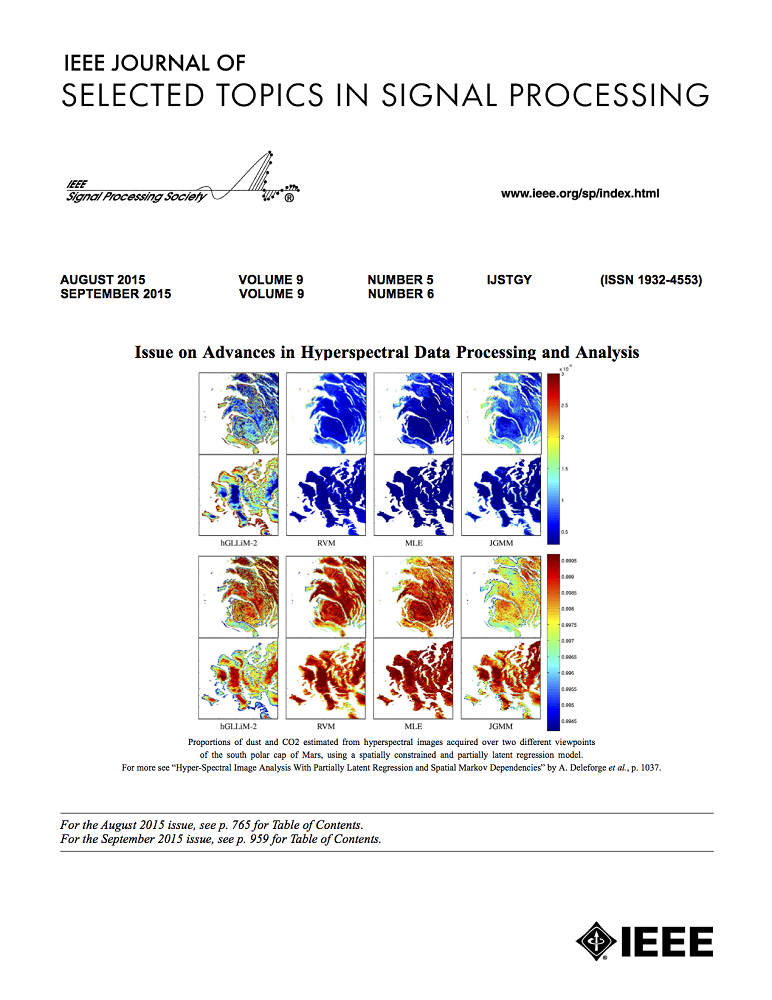用于自动调制识别的高效分治域适配器
IF 8.7
1区 工程技术
Q1 ENGINEERING, ELECTRICAL & ELECTRONIC
IEEE Journal of Selected Topics in Signal Processing
Pub Date : 2024-09-03
DOI:10.1109/JSTSP.2024.3453559
引用次数: 0
摘要
深度学习技术的发展为自动调制识别(AMR)任务注入了新的活力。尽管取得了可喜的进展,但由于忽略了数据内部的潜在分布,即在单个特征空间中对样本进行分类,现有模型在低质量的通信环境中往往会失去识别能力,从而导致性能不理想。基于这一观察,本文从潜在数据分布的新角度重新思考调制信号的分类。为了解决这个问题,我们为AMR任务提出了一种新的高效的分而治之的域适配器(EDDA),大大提高了现有模型在具有挑战性的场景中的性能,而不考虑其架构。具体来说,我们首先采用分而治之的方法,通过信噪比(SNR)将原始数据划分为多个子域空间,然后鼓励域适配器估计潜在分布并学习域内不变特征投影。随后,我们引入了一种动态更新域标签的策略,克服了用信噪比划分初始域标签的局限性。最后,我们为EDDA提供了理论支持,并在RadioML2016.10a和RadioML2016.10b两个广泛使用的基准数据集上验证了其有效性。实验结果表明,EDDA在两组数据集上的平均准确率分别提高了11.63%和2.32%。理论和实验结果证明了EDDA的优越性和通用性。本文章由计算机程序翻译,如有差异,请以英文原文为准。
EDDA:An Efficient Divide-and-Conquer Domain Adapter for Automatics Modulation Recognition
The development of deep learning technology has injected new vitality into the task of automatic modulation recognition (AMR). Despite achieving promising progress, existing models tend to lose recognition capability in low-quality communication environments due to the neglect of latent distributions within the data, i.e., classifying samples in a single feature space, resulting in unsatisfactory performance. Motivated by this observation, this paper aims to rethink the modulation signals classification from a new perspective on the latent data distribution. To address this, we propose a novel efficient divide-and-conquer domain adapter (EDDA) for AMR tasks, significantly enhancing the existing model's performance in challenging scenarios, irrespective of its architecture. Specifically, we first follow a divide-and-conquer approach to divide the raw data into multiple sub-domain spaces by signal-to-noise ratio (SNR), and then encourage the domain adapter to estimate the latent distributions and learn domain internally-invariant feature projections. Subsequently, we introduce a dynamic strategy for updating domain labels to overcome the limitations of the initial domain label partition by SNR. Finally, we provide theoretical support for EDDA and validate its effectiveness on two widely used benchmark datasets, RadioML2016.10a and RadioML2016.10b. Experimental results show that EDDA achieves average accuracy improvements of 11.63% and 2.32% on the respective datasets. Theoretical and experimental results demonstrate the superiority and versatility of EDDA.
求助全文
通过发布文献求助,成功后即可免费获取论文全文。
去求助
来源期刊

IEEE Journal of Selected Topics in Signal Processing
工程技术-工程:电子与电气
CiteScore
19.00
自引率
1.30%
发文量
135
审稿时长
3 months
期刊介绍:
The IEEE Journal of Selected Topics in Signal Processing (JSTSP) focuses on the Field of Interest of the IEEE Signal Processing Society, which encompasses the theory and application of various signal processing techniques. These techniques include filtering, coding, transmitting, estimating, detecting, analyzing, recognizing, synthesizing, recording, and reproducing signals using digital or analog devices. The term "signal" covers a wide range of data types, including audio, video, speech, image, communication, geophysical, sonar, radar, medical, musical, and others.
The journal format allows for in-depth exploration of signal processing topics, enabling the Society to cover both established and emerging areas. This includes interdisciplinary fields such as biomedical engineering and language processing, as well as areas not traditionally associated with engineering.
 求助内容:
求助内容: 应助结果提醒方式:
应助结果提醒方式:


